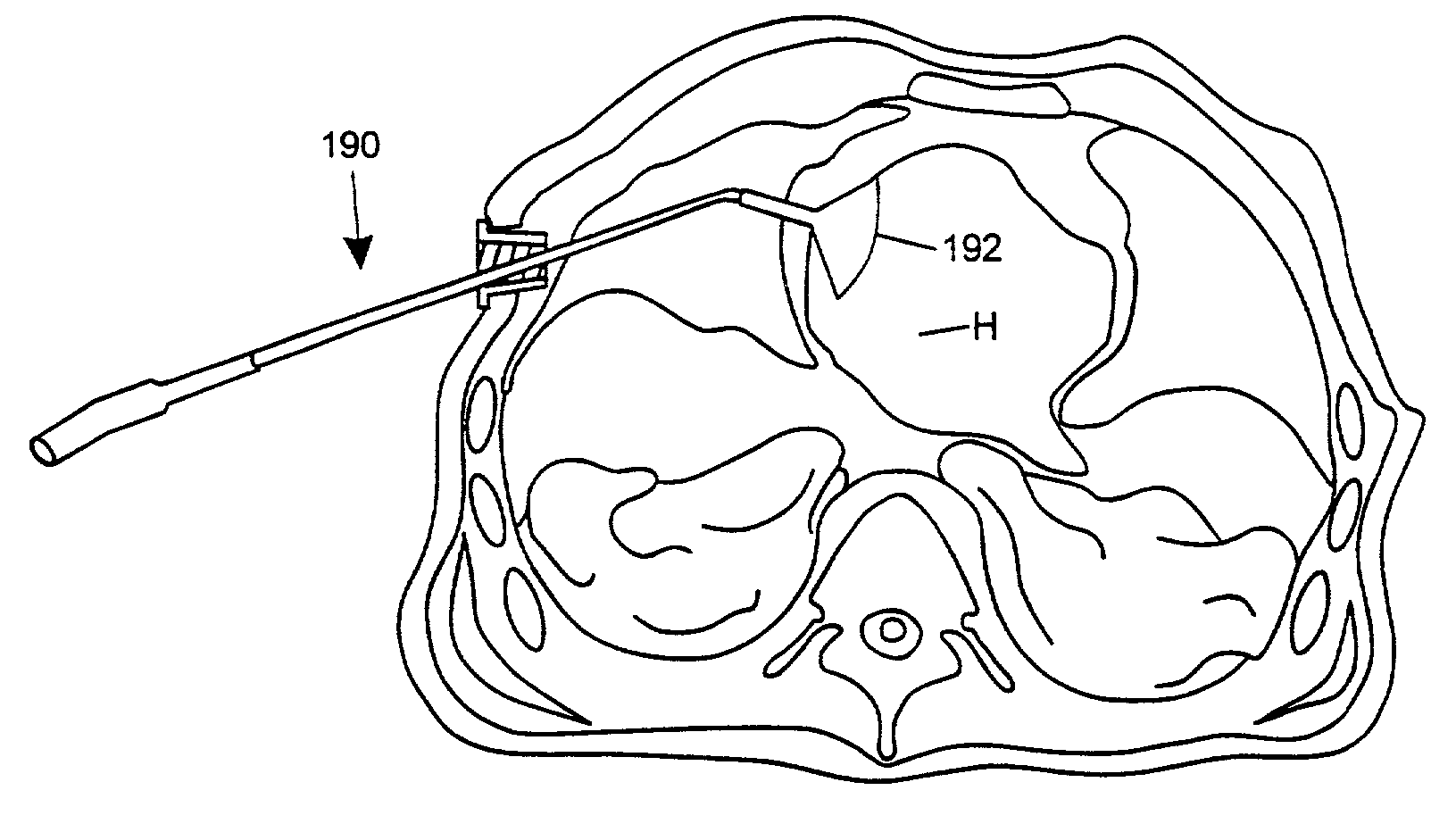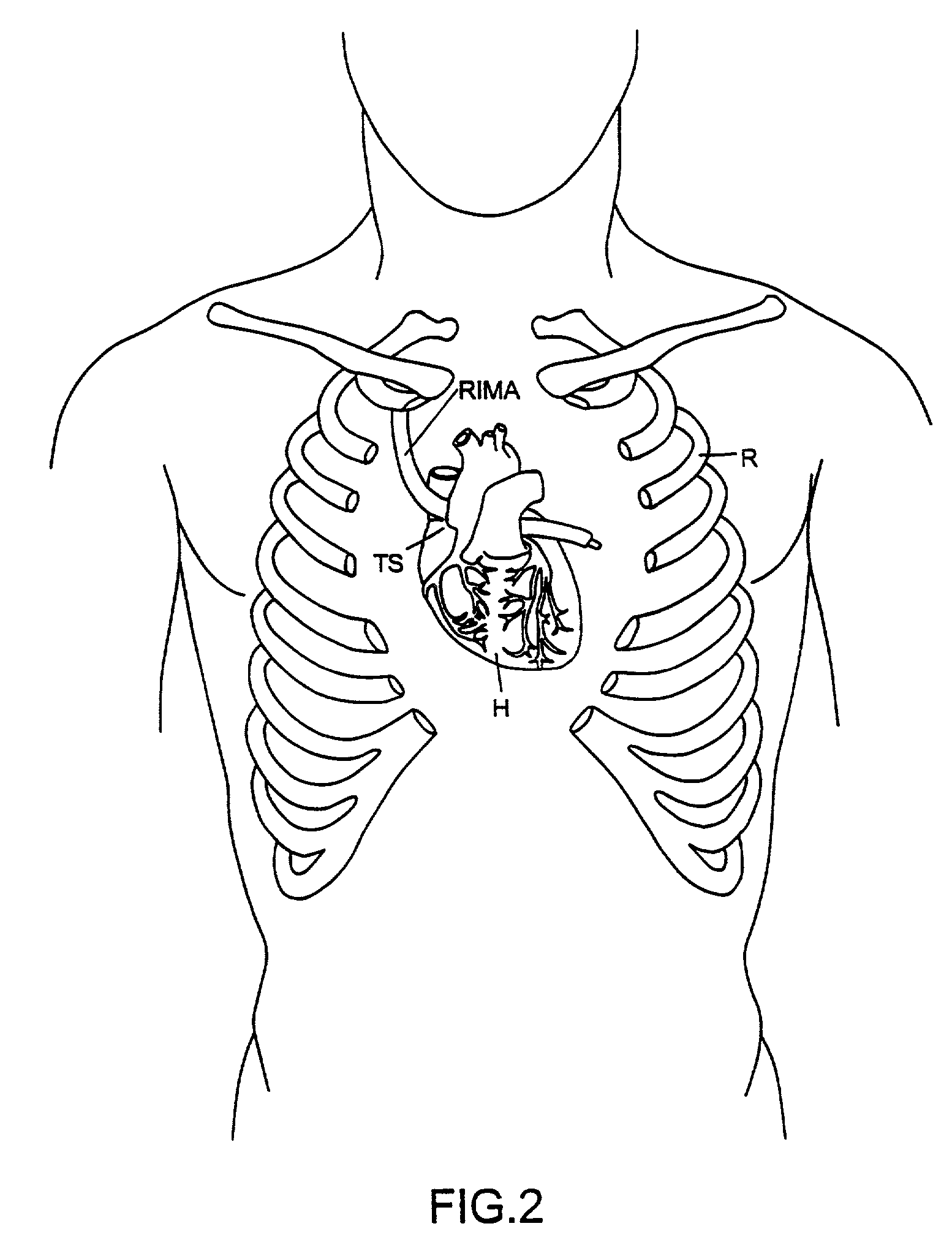Devices and methods for port-access multivessel coronary artery bypass surgery
- Summary
- Abstract
- Description
- Claims
- Application Information
AI Technical Summary
Benefits of technology
Problems solved by technology
Method used
Image
Examples
Embodiment Construction
The Surgical Method
[0064]FIG. 1 is a schematic view of a patient's thorax illustrating the takedown step of the port-access CABG procedure. The takedown step should be performed while the patient is under general anesthesia, but before the patient has been placed on cardiopulmonary bypass. If the LIMA is to be used as an arterial bypass conduit, a series of access ports are created on the left lateral side of the patient's chest, as shown in FIG. 1. The access ports are created by incising the skin with a scalpel between two of the patient's ribs, then an access cannula 112 with a trocar is pushed through the intercostal space. Preferably, a self-anchoring access cannula 112 with a 10–12 mm internal diameter is used for the takedown ports. The placement of the access ports is highly variable, depending on the preferences of the surgeon and the anatomy of the patient which is assessed fluoroscopically before the operation to verify the preferred locations.
[0065]In one preferred embod...
PUM
 Login to View More
Login to View More Abstract
Description
Claims
Application Information
 Login to View More
Login to View More - R&D
- Intellectual Property
- Life Sciences
- Materials
- Tech Scout
- Unparalleled Data Quality
- Higher Quality Content
- 60% Fewer Hallucinations
Browse by: Latest US Patents, China's latest patents, Technical Efficacy Thesaurus, Application Domain, Technology Topic, Popular Technical Reports.
© 2025 PatSnap. All rights reserved.Legal|Privacy policy|Modern Slavery Act Transparency Statement|Sitemap|About US| Contact US: help@patsnap.com



